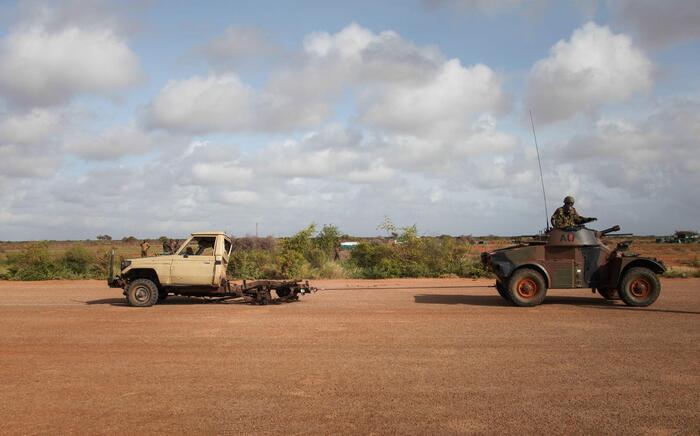Nature conservation, through ecotourism, is the third most important industry in Kenya, after agriculture and livestock, contributing more than 10% of the Gross Domestic Product (GDP).
State protected areas are mostly managed by the Kenya Wildlife Service (KWS).
Kenya also has a number of private and/or community reserves among the most important in Africa, with more than 160 throughout the country, which protect more than 6,350,000 hectares (89% in community reserves) equivalent to 11 % of the country's area and more territory than the total managed by the KWS.
These reserves, locally called “
conservancies”
, are gathered regionally in 11 associations.
The one that manages the largest territory is NRT (Northern Rangelands Trust).
The one that attracts the most tourism and, therefore, generates the most benefits, is the Maasai Mara Wildlife Conservacies Association, and the one with the largest number of reserves is the Taita Taveta Wildlife Conservacies Association, with 33.
Economically, the Maasai Mara Greater Ecosystem Reserves alone paid more than $3 million in land leases to communities in 2016 alone.
The diversity of reserves in Kenya both naturally and culturally is impressive.
They protect more than 90% of the populations of some endangered species, such as the Grevy's zebra or the hirola antelope.
They serve as a complement to the national system of protected areas and shelter a large number of the 65% of the country's total wildlife that lives outside the state system of parks and reserves.
They also provide direct employment to more than 5,000 people and benefit more than 800,000 people indirectly.
Some of these reserves have pioneered conservation projects that have managed to preserve rhinos in Kenya (including the last specimens of the northern white rhino subspecies), multiplying by 2.6 the density of lions in the conservancies of the ecosystem
of
the Maasai Mara, unite through biological corridors some of the most important and numerous elephant populations in the country that had not been exchanged for decades, minimizing, in turn, conflicts with these animals, or controlling poaching of elephants or rhinos, which others countries like Tanzania and South Africa have not.
Economically, the Maasai Mara Greater Ecosystem Reserves alone paid more than $3 million in land leases to communities in 2016 alone and invested more than $1 million in community development projects between 2015 and 2016, payments and projects that continue to do.
On a financial level, most of these reserves and associations, especially the NRT, obtain funds from international organizations such as the European Union, USAID, the cooperation of Germany, Sweden or Denmark, organizations with the highest labor, environmental and labor rights standards. in the world and with a comprehensive accountability system that many organizations do not have access to because they do not duly comply with the requirements.
The variety in management, and associated success, in private and community reserves is also very varied and diverse, both in form and in results.
The criticisms leveled at this system are guilty of four serious errors:
Taking the part for the whole: extrapolating management problems or misconduct from some specific reserves, with management autonomy, to an entire association that includes 33 reserves, or to the entire system of private and community reserves (167 reserves).
Assuming as true all the postulates of a single report from the Oakland Institute, without even mentioning the responses of the main association criticized by that report (NRT) and, therefore, assuming everything that the aforementioned report relates as proven.
Falling into the myth of the noble savage, something much outdated for a long time, by saying that the indigenous people live in harmony and better manage nature.
The perceived harmony is given by low levels of population density, from which the human, indigenous or “civilized” impact is apparent and real.
Collapse
, an excellent book by Jared Diamond, although with some errors and nuances, gives a very good idea that the problem is not the type of people, but the number of people (population density).
The level of prosperity of rural situations is also very explanatory.
Although it is true that traditional governance systems contain safeguards to guarantee the sustainable exploitation of natural resources in the long term, when impoverishment reaches certain thresholds the population is forced to act due to short-term emergencies that threaten environmental objectives.
Conflict, demographics, economic inequality and poverty are closely linked to the lack of female empowerment.
Education is a powerful weapon to reverse these situations,
as Kenyan society has well demonstrated at the national level.
NRT's long-term vision in investing in these types of strategies is an obvious rural development and social achievement that critics miss.
Not contrasting the information and not giving voice to all the parties involved, making a true
journalistic
apartheid by choosing only sources that support or reinforce the theses aligned with the political correctness of the radical post-colonialist discourse.
We do not intend to refute the Oakland Institute report in whole or in part, as NRT has already prepared a forceful response to it.
Nor do we mean to deny the complex reality of conservation in Kenya, with many successes, many failures, many good practices, and many bad ones.
We intend to highlight the limitations of the post-colonialist discourse, blessed by a certain feeling of imperialist guilt, misunderstood, which is often fueled by resentment and racism (towards the white population) openly professed by some of the main Kenyan interlocutors who are quoted when talking about the issues that we mention here (without denying, of course, that there is also racism from whites to blacks).
Iñaki Abella Gutiérrez
is the director of the Biomas Association and a conservation biologist with more than 10 years of experience in Africa and living in Kenya since 2010.
Pablo Manzano
is a researcher at the Basque Center for Climate Change - BC3, and has worked for the University of Helsinki, the International Union for Conservation of Nature (IUCN) and the UN Food and Agriculture Organization (FAO).
You can follow PLANETA FUTURO on
,
and
, and subscribe
here
to our 'newsletter'
.











/cloudfront-eu-central-1.images.arcpublishing.com/prisa/KMEYMJKESBAZBE4MRBAM4TGHIQ.jpg)


